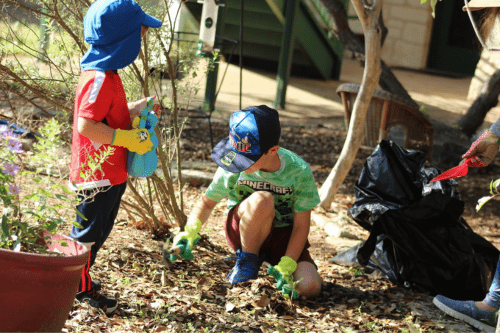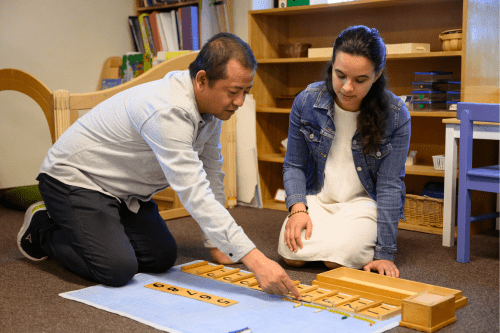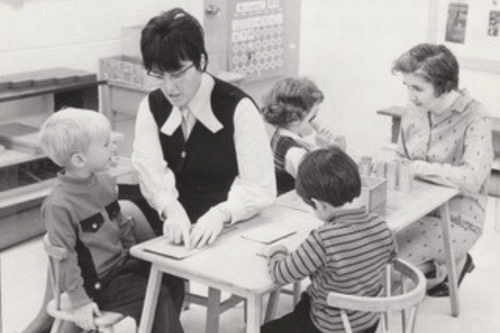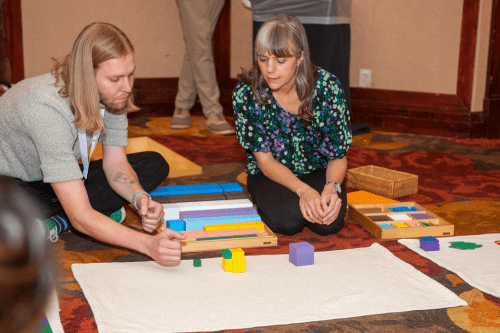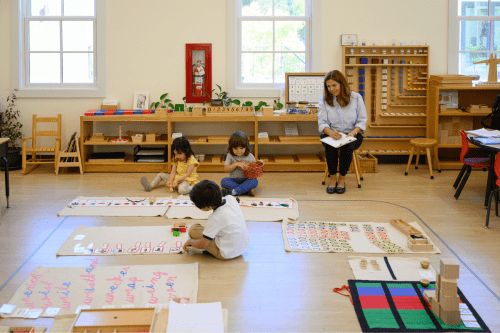Setting Intentions for the New Year: How to Support Children in Positive Conversations around Reflection and Goals
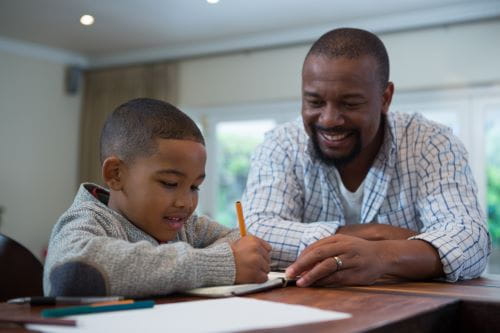
The New Year marks the opportunity for change and the promise of new beginnings. It is a time of renewed hope and enlightened visions for the future. Often, as adults, time is set aside in early January to reflect on the previous year and exercise intentionality when setting goals for the coming year. However, many parents overlook the importance of involving their children in this process.
Intention setting is a powerful life skill that can be modeled for children and one they can be encouraged to use that will benefit them both in the present and in the future. An intention is an intended goal or aim. Research shows that intention setting promotes success in many areas of life, likely because developing an established end in mind allows one’s thoughts, actions, attitude, and choices to follow in that direction.
Taking the time to engage in positive conversations with children at the start of the new year will support their success. These dialogues will provide them with an opportunity to reflect on their past, develop goals, and set intentions with the encouragement from adults they trust and admire.
5 Tips for Supporting Children in Setting Intentions for the New Year
- Play a game imagining new possibilities. Creativity and imagination have been shown to help children in the development of self-concept. Encouraging a child to imagine new possibilities is fun, interesting, and exciting! Parents can ask their child if they could do anything in the world, what would it be? Engage in a conversation with them about this possible future, asking them to imagine what it might be like to be a doctor, a teacher, or a musician, or to swim with dolphins, to go to college, etc.
- Start small by setting daily intentions. For younger children, it can be helpful to start small, setting intentions together every morning. As they begin their day, parents can ask their children, “What kind of day are we going to have today?” Help them see the positive in their response and remind them that setting intentions daily sets the tone for the day.
- Help them clarify what they want. Intentions should be specific. Whether it is for a day, a month, a year, or a lifetime, it is important that one’s desires are clear when developing goals. For instance, wanting to be happy is wonderful, but more specific details are needed in order to put a plan in place to achieve that happiness. Ask them to think about exactly what it is they want in each area of their life including home, family, work, school, friendships, relationships, finances, etc.
- Help make their visions more concrete. Sometimes lofty goals can seem too far out of reach, even for children. Helping make their visions more concrete will make them more real. Parents can encourage their children to write down or draw the possibilities they have, or are, imagining and display it somewhere that is easily seen each day. To help embellish the thoughts, parents can ask what it looks like, feels like, smells like, or even tastes like. It might even be fun for some children to act out their dreams, if possible. The visibility of their intentions will encourage them to think of their goals often and will promote positive thoughts about the future.
- Encourage them to think about what they need to do to make their intentions happen. It is important to help children realize that their intentions will take hard work and dedication. Parents can help by asking their children what they believe is necessary to make their dreams a reality. With some help, children can make a list of the steps required to accomplish their intentions and these can be used to guide future conversations about the progress they have been making towards achieving their goals.
Maria Montessori spoke of the importance of Practical Life activities, experiences that support the child in learning the skills of everyday life. Especially as children grow and develop, modeling the process of goal setting helps children understand what is required and how it feels when one works hard to experience success. By involving them in the process of intention setting, supporting them as they set their own goals, parents can provide children with the opportunity to practice a practical skill that is imperative in life.
About the Author
 |
Heather White, EdS, is a Montessori in-home teacher and nanny, a Montessori educational consultant for the Andrew’s Institute, a Montessori educator for adult learners, and a volunteer moderator for the Montessori at Home 0 – 3 Facebook page. Formerly, she was a Montessori teacher, Lower Elementary coordinator, and associate head of school. She also has experience as a School Psychologist intern. She is AMS credentialed (Early Childhood, Elementary I). Contact her at hpratt@stetson.edu. |
Interested in writing a guest post for our blog? Let us know!
The opinions expressed in Montessori Life are those of the authors and do not necessarily represent the position of AMS.







